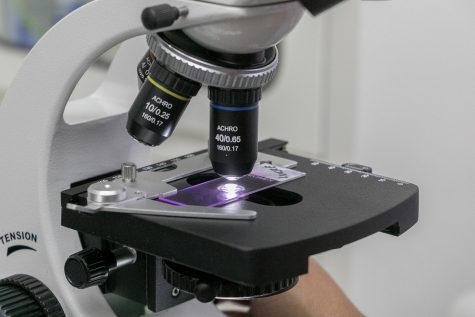Best of School
December 11, 2015
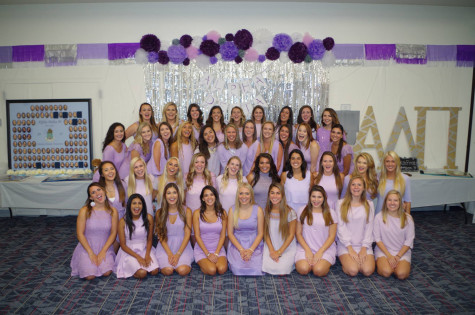
Best of Fraternity and Sorority Life
All four were the brightest. Which one was picked as the best?
Story by Alexandra Van Erven
While Greek life is mostly known for its exclusive recruitment, socials, fundraising and lifelong bonds as part of an academic institution, GPA and scholastic performance play an important role in building each chapter. Every semester, Florida Atlantic’s Fraternity and Sorority Life puts out an all-council inclusive community report, ranking organizations by GPA, service hours, philanthropic donations and more.
We picked the top four out of 29 fraternities and sororities, based off the rankings under “Spring 15 All Member Cumulative GPA.” Students then voted for their favorite out of the finalists, resulting in Alpha Delta Pi and Sigma Phi Epsilon taking the titles of “Best Sorority” and “Best Fraternity” of 2015.
Best Sorority
ALPHA DELTA PI
When it comes to the sororities on campus, the highest scoring among voters was Alpha Delta Pi — gaining nearly 65 percent of the vote.
Founded in 1851 at Wesleyan College in Macon, Georgia, Alpha Delta Pi is credited with being the first sorority established for college women — valuing scholarship, self, sisterhood and true friendship.
The Theta Kappa chapter of Alpha Delta Pi was chartered at FAU in the fall of 2009 and currently has the second-highest cumulative GPA of the sororities surveyed, with a 3.06.
Alpha Delta Pi had 125 members in spring of 2015 and raised $6,088.80 in philanthropic donations. The national philanthropy they donate to is the Ronald McDonald House which, according to the sorority’s official website, “provides a home away from home for sick children, as well as for their families, when traveling away from home is necessary for medical care.”
The other three sororities also had strong cumulative GPAs. Alpha Nu Omega’s was a 3.09, Delta Sigma Theta’s a 3.0 and Sigma Lambda Gamma, a 3.04.
Best Fraternity
SIGMA PHI EPSILON
Out of the four fraternities lined up to win “Best Fraternity,” Sigma Phi Epsilon led the pack with nearly 50 percent of the vote.
Founded in 1901 at Richmond College in Virginia, and according to their official website, Sigma Phi Epsilon has a “completely different Member Development process than other fraternities at FAU.” Their founding principles are virtue, diligence and brotherly love.
The university’s Florida Xi chapter has the highest cumulative GPA from the list of fraternities and has the second highest GPA among all FAU Greek organizations with a 3.08. In the spring 2015 semester, the chapter had 39 members and raised $298 in philanthropic donations.
Alpha Phi Alpha came in second place with nearly 23 percent, and Alpha Psi Lambda came in third with 18.18 percent. Sigma Chi trailed with 13.64 percent of the 22 votes.
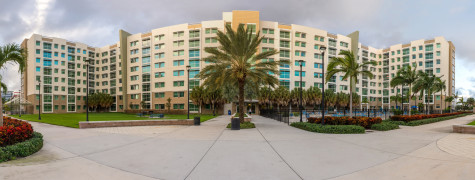
Best, Worst Residence Halls
INNOVATION VILLAGE APARTMENTS AND ALGONQUIN HALL
Looks like you get what you pay for.
Story and photos by Emily Creighton
Innovation Village Apartments — the most expensive on-campus housing choice — took the student vote for “Best Residence Hall,” while Algonquin Hall — the cheapest single room housing option — took Worst Residence Hall.
IVA is located on the north end of campus next to the stadium. It earned 51.61 percent of the 31 votes for “Best Residence Hall.”
IVA opened in 2011, offering 1,216 beds to upperclassmen. Each suite contains full-sized beds, a common area, a full kitchen and an in-suite washer and dryer. Residents can also choose between a two-bedroom or a four-bedroom suite. A pool and an Outtakes convenience store is located in IVA North as well.
Lastly, the building is LEED certified. Its design is environmentally friendly. The Leadership in Energy & Environmental Design Gold ranking includes features such as sun shades on windows, natural daylighting, Energy Star appliances and more.
A spot in the gated facility goes for anywhere from $5,180 to $5,680 per semester. Algonquin Hall fell at the other end of the spectrum, receiving 51.61 percent of the votes for “Worst Residence Hall.” Even after renovations in 2011, “The Gonq” — which was built in 1968 — seemingly isn’t up to students’ standards.
Located behind the Student Services building, Algonquin Hall can house up to 93 students. Each suite houses four residents — all have singles with twin extra-large beds.
A room there goes for $3,300 per semester.
For “Best Residence Hall,” University Village Apartments followed in second, with Heritage Park Towers and Parliament Hall tying for third. For the worst, Glades Park Towers, HPT and Parliament Hall tied for second.
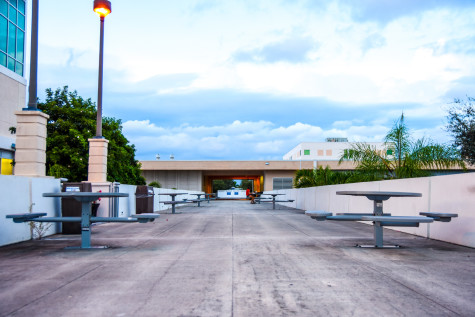
Best Study Spots
Ditch your dorm and find the perfect study spot on campus.
Story by Alexis Hayward
Until the day that robots can insert information straight into our brains, we have to do it the old fashioned way: studying.
But dorms with noisy roommates and messy desks don’t make for the best academic environment. Plus, a study conducted by Harvard’s Division of Sleep Medicine shows that working in the same place that you rest can disrupt your sleep schedule — and sleep is a hot commodity in college.
Discovering the perfect study spot might be what you need.
As a full-time marketing major with two minors, I take my study sessions seriously. As a junior, I’ve had time to explore all that campus has to offer when it comes to study areas.
From the obvious ones to hidden treasures, here are the best places around the Boca Raton campus to hit the books:
The Computer Center
Located between the College of Business (BU-86) and Wimberly Library is a pink building with a sign that reads “Computer Center.” Inside you’ll find about 50 computers, very few of which are typically taken. This provides minimal distractions and room to spread out your papers and notes without having to worry about mixing them up with your neighbors’.
Second floor of the Breezeway
Fresh air can help you think clearly. On the second floor of the Breezeway, tables and benches are available. Only a few people use the second floor to avoid the commotion below, so you won’t get interrupted.
The Cube
Located on the first floor of the Engineering East building (EE-96) is The Cube — a computer lab, study area hybrid. There are sofas, booths, computers and even meeting rooms with whiteboards available.
If you’re not an engineering major you’re technically not supposed to be in there, but since the building was paid for with a donation to FAU, not just the engineering department, they can’t kick you out.
Just be sure you don’t piss off any engineers — it’s likely one of them will be your boss one day.
Note: If you need a break, go up to the third or fifth floor to the balcony gardens to get some air and a great view of campus.
Business Building Pavilion
On the first floor of the College of Business building, next to the satellite Outtakes’ location, are tables and couches ideal for group or individual study sessions. The high ceilings give you room to breathe, and the nice bustle of people walking to and from classes make it the perfect academic atmosphere. And, if you get hungry, you can always grab a snack.
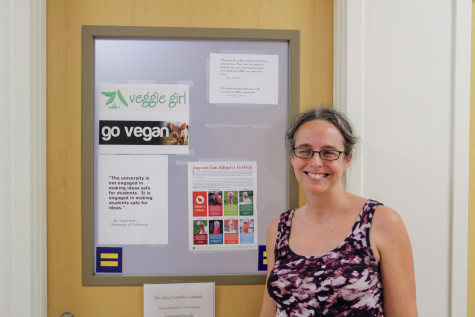
Photo By Andrew Fraieli | Science Editor
Best Professor
Rate My Professors has a top-rated professor at FAU, and she had no idea.
Story by Andrew Fraieli
“My number one goal is for my students to leave a better person. I’m trying to get them to be more caring and compassionate people,” said senior instructor of sociology Gina Carreno-Lukasik, the best professor at Florida Atlantic according to Rate My Professors.
Rate My Professors is a website that allows students to grade professors on their helpfulness, easiness and clarity.
The sociological perspectives, human sexuality and social change professor has 311 ratings as of Nov. 18, the highest number of reviews of any FAU teacher. “I didn’t know I was the absolute highest. I’m not good at compliments. It’s scary. I’m kidding; it’s very nice. Students are nice,” said Carreno-Lukasik. “That’s nice to know. I’m slightly embarrassed.”
Since the start of her Rate My Professors page in 2002, Carreno-Lukasik has yet to receive a bad review.
“THE BEST TEACHER I HAVE EVER HAD,” “She has made me want at least a minor in sociology” and “I would love to start a fan club for Gina,” are just a few of the comments previous students have made.
Past students particularly liked her jokes.
“Jokes? Makes me sound like a comedian, a wanna-be comedian,” said Carreno-Lukasik, laughing. “I do try to use humor, it’s my personality.” She explained that she uses “lots of examples and tell tons of stories” because “sociology is real-life; it’s relatable.”
Carreno-Lukasik welcomes any comments and takes what students have to say seriously. She said, “I know most people in my class don’t want to be sociology majors, but me personally, I want them to leave college better people. And college should be fun, so I try to do that as well.”
Highest Paid Professor
There are many high paid professors at FAU, but most don’t teach.
Story by Andrew Fraieli
If you were hoping that your favorite professor — like the one that finally made math intriguing, or the one that stayed after class for hours to help you understand something — is the highest paid in the school, you’d be wrong.
The highest paid professor at Florida Atlantic is David Bjorkman, the dean of FAU’s College of Medicine, making $463,726 per year, but he doesn’t teach any classes. For comparison, he could pay for ten in-state master’s degrees every year with his salary.
According to Florida’s Right To Know — an online public database of state salaries — the highest salary at FAU is $500,000, belonging to head football coach Charlie Partridge. Bjorkman is right below him.
Although Bjorkman’s title is dean, he is listed as professor in the database and according to FAU’s website, “his responsibilities include providing the highest quality educational experience for physicians in training.” But, his name has not been listed as instructor under a single class in FAU’s online departmental schedule since 2007 — as far back as the online schedule goes.
The next highest paid professor in the database that actually teaches classes is Morton Levitt. His name comes after six professors and associate professors,”including a second athletic coach — who’s paid $325,000.
Levitt is a professor of clinical biomedical science, earning $215,117 per year. The last class taught by him was fundamental general pathology for graduate students in the summer of 2015.
Looking at other schools within the state university system, the highest paid professor at the University of Florida is William Friedman, the director of the Preston Wells Center for Brain Tumor Therapy. He makes $961,281 per year.
The highest paid “professor” at the University of Central Florida is the dean of medicine, Deborah German; her salary is $541,402. Highest paid at Florida State University is the general surgery residency program director, Wade Douglas — earning $450,000 per year.
In a similar trend to FAU, these are all deans of colleges or directors of programs. According to job descriptions found on the university websites, the majority don’t teach classes as part of their responsibilities.
Rather than being a teacher inspiring students while toting piles of papers, the highest paid “professors” at FAU turn out to be managers and deans who can afford Mercedes and BMWs.
















